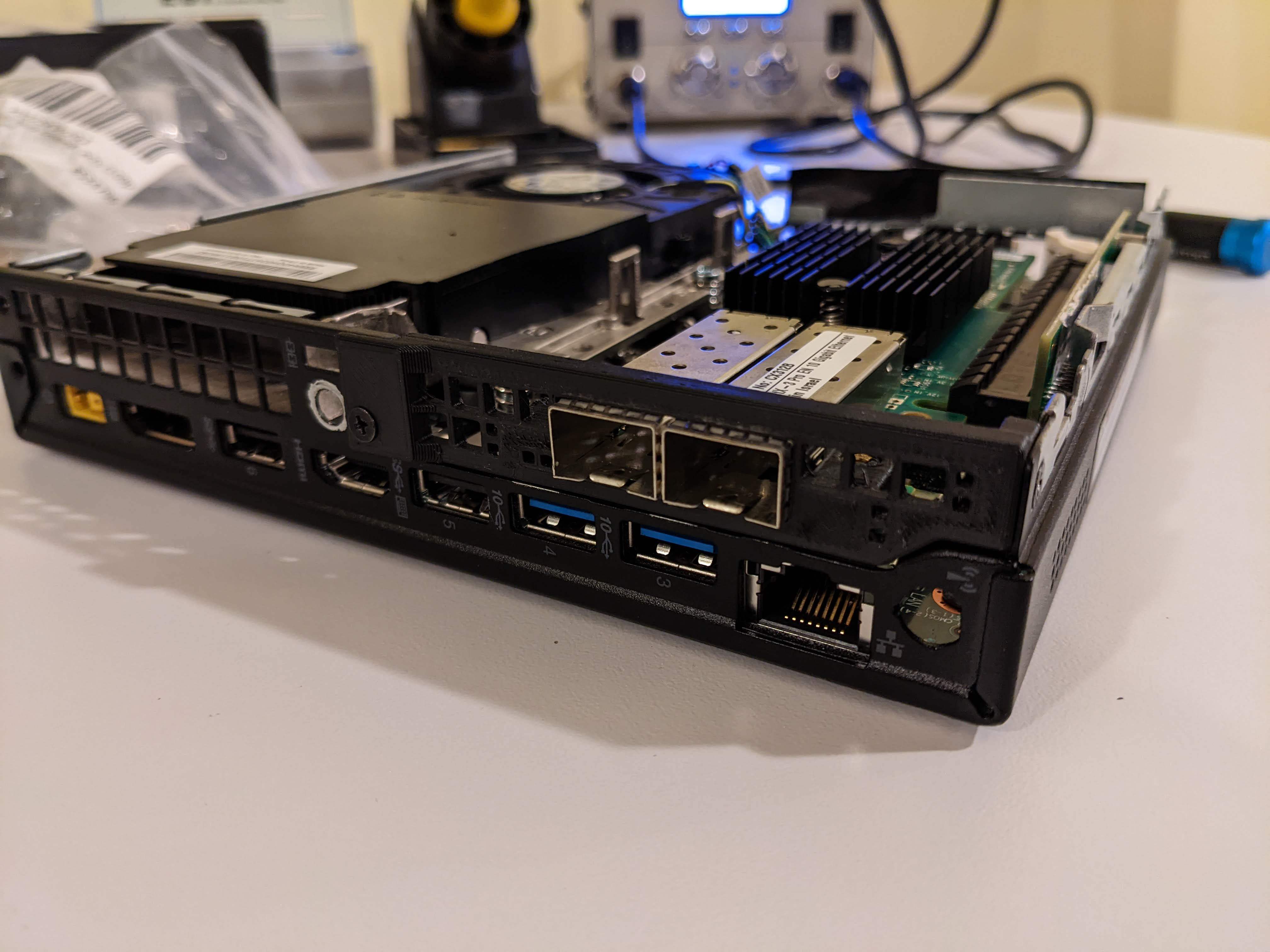

Depends on the application. I run a nightly backup of a few VM’s because realistically they dont change much. I have containers on the other hand that run critical (to me) systems like my photo backup and they are backed up twice a day.


Depends on the application. I run a nightly backup of a few VM’s because realistically they dont change much. I have containers on the other hand that run critical (to me) systems like my photo backup and they are backed up twice a day.


Used UPS’s show up from time to time. I recently found a craigslist posting with 6 all of which were in decent shape needing some cleaning, and new batteries.
Batteries are the rub since they only last about 5 years so most used ones need new batteries. Good news is its not that hard to replace them as long as you take your time and pay attention.


Ubiquity is trash with fickle support based on the whims of what sells wide adoption. TP Link IMO is a decent value for the money if you want easy “prosumer” level networking gear. I have I have 3 TP Link APs as well as a 16 port 10g core switch and its great for my needs.
Mikrotik offers more features per $$ but its not as easy to use.


Second this, whatever you pick never let someone else “own” your data because then they own your company. If you cant export data freely so it can be imported into another system, then its not yours.


consumer crap is just that crap.
I like small PC’s as PFsense/Opnsense routers and then a POE switch and access points. It always works better than any mesh or consumer stuff.
Ubuntu server, it’s a bit more modern than Debian and has a massive install base which means someone has had your problem and fixed it before and documented it.


many times, shucking is a very valid way to get large format disks for cheaper than retail NAS parts. But be aware of what your buying and make sure that the disk your getting if its a white label is a reliable disk. WD Easystore/Mybook are generally good, as are the larger format Seagate external.


Im not sure Intel has any worthwhile CPU’s unless you are getting them used.
Currently E cores are mostly trash, and not all that “efficient” and letting a P Core turbo up and get the task completed uses less overall power.
Secondly Intel is lying about its heat output, and power use. Everything from 10th gen up is a power hog if you dont limit the performance to well below “stock” settings.
https://www.techspot.com/review/2612-intel-core-i5-13500/
This is a good match up between an i5-13500 vs R5 7600, which is the most interesting IMO. The R5 7600 seems to be about $15 less expensive for just the CPU and uses 3/4ths the power which will be a greater savings over time vs Intel. The AMD Motherboards also still seem to trend a bit lower in cost than Intel.
So overall its a good question. If you can get a use 13500 or one under $150 then its probably worth it, but at retail prices the 7600 will cost less to buy, and less to own while being similar in performance.


Create 3 VM’s and pass-through disks to each VM. Boom ceph cluster on a single computer.
ZFS/BRTFS might still be better, but if you really want Ceph this should work and provide expansion and redundancy at a block device level, though you wont have any hardware redundancy regarding power/nodes.


https://www.theserverstore.com/
They also have a large ebay presence but I have purchased from both their ebay store, and their web store depending on what I needed.


The only real advantage of RAID1 is that in some cases you get 2x the read performance. But doing snapshots where you get backups that include changes is more powerful than RAID or a volume copy.


The version I posted is connect x3 and the b variant which is the lower power version. It is still well supported in most Linux/BSD based operating systems. The connect x2 less so, plus it’s on an older more power hungry design.
IDK about using the wireless card. I have APs so I never tried. I will say an AP will have much better coverage than any Wi-Fi card.


No that card wont work, it will cook its self in an M720q.
What you want is a https://www.ebay.com/sch/i.html?_from=R40&_trksid=p3814320.m570.l1313&_nkw=MCX312B-XCCT&_sacat=0 MCX312B which runs much cooler and can comfortably fit in an M720q.
the default 65w PSU is fine with an i3/i5, but you can get a larger one if you want. I can try testing idle power though I am on a 110v/60hz system so it may not be exactly the same.
I have seen line speeds at nearly full bandwidth on mine in synthetic testing.
I ended up adding a M.2 A+E 2.5gb network card in place of the wifi card which gives me 4 network interfaces. stock intel 1gb, M.2 Realtec 2.5gb, and 2x Melanox 10gb SFP’s.
Last thing, DO NOT USE RJ45 SFPs. The draw way to much power and generate lots of heat. Use direct attach cables, or fiber to connect to switches/routers.



I dont see any issues!
/me hides his 16 4tb 12g SAS drives…


The primary reason I have to fiddle with things in linux is because I want to do things that really are not possible in windows. I still have to use Windows for work because I am tied to specific software and in these cases I have no other choice.
But I find I spend equal time fixing and supporting my windows machine as I do with linux. There are lots of valid complaints about linux and I have my own, the biggest is on Manjaro which I run for my daily it frequently has expired keys and updates just stop running correctly and the error messages are just bad.
I personally hit the tipping point with windows on windows 10. Initially I loved it, and it seemed like a good upgrade from windows 7 which I had previously been using. But then Microsoft started forcing anti user features. I decided that rather than have to spend time after EVERY FORCED update hunting down the settings and registry hacks that had been changed again to what I expressly wanted.
I personally see the value of Windows, but I would just disagree with it having a better experience. The experience is equally frustrating and the biggest thing holding people back is that they are used to the frustrations and dont think of them as being as significant as they are.


for what…? Stealing your data, sending telemetry about how your kids play minecraft, serving up Ad’s in your start menu, forcing updates that reset your configured preference, overriding group policies, abusive licensing, trying to shove bing and edge down your throat?


Don’t buy garage SD cards. I have cards that have been in use for years.


Not op but I have 3 tiny PCs and I run Linux on them. But then I don’t run windows at all because it honestly sucks.
zimablade or zimaboard easy setup and casaos or zimaos make selfhosting easy with preconfigured apps/containers mine is an intel quad core with 8gb and pcie 4x slot.